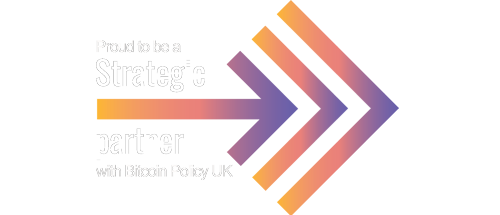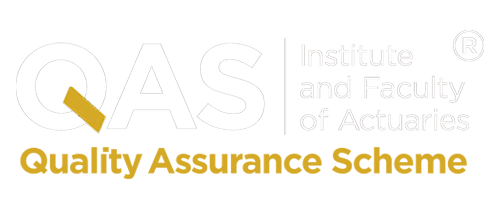Historical insights into recent inflation dynamics
In 2020, the UK’s consumer price index (CPI) plunged to almost 0% after the COVID-19 outbreak and subsequent government lockdowns and travel bans brought the global economy to a skidding halt. Yet little more than a year later inflation was surging as the global economy, particularly the Western part of it, began reopening. Many economists laid the blame on an explosion of pent-up demand at a time of tight supply chains, many of which ended up buckling. China, as readers may recall, was still operating at a fraction of its capacity.
Yet, underlying these observable triggers was a foundational catalyst: a significant increase in the money supply, funnelled into the economy through extraordinary fiscal and monetary policies. The central bank stimulus of the post-Lehman period stayed largely within the confines of the financial system, where it fuelled myriad asset bubbles. Whereas the monetary and fiscal stimulus unleashed in the early months of the COVID-19 pandemic flowed into the real economy – at a time when the real economy was on standby. The result was a massive explosion in the broad money supply, meaning a lot more money was chasing a lot fewer goods. The inevitable result was a sharp rebound in inflation, which began in mid-2021.
The Russian invasion of Ukraine, one of the world’s largest wheat exporters, in February 2022, and the West’s subsequent imposition of sanctions on Russia, one of the world’s most important commodity exporters, turbocharged the inflationary forces. The sanctions caused a global shortage of essential commodities including energy, fertilisers, grains, steel and aluminium while exacerbating a pre-existing shortage of food and fertilisers.
The recent easing of inflationary pressures
Since early 2023, inflationary forces have largely dissipated on the back of aggressive interest rate hikes, falling demand and sliding energy and commodity prices. As well as the normalisation of supply chains, lower durable goods prices and a gathering economic slowdown in China, where there are signs not just of disinflation but also deflation.
Forecasting 2025: inflation or disinflation?
That, broadly speaking, is where we find ourselves today. But, what lies in store for 2025: inflation or disinflation?
This is an almost impossible question to answer since there is no way of knowing with any great certainty how the current financial, economic and geopolitical crises will evolve over the next six months, let alone what new crises may emerge.
On the surface, conditions appear to be more favourable than they were this time two years ago. Then, the UK was grappling with an inflation rate of just over 11%. Today (December 2024), the CPI is hovering at a much more manageable – though still high – 2.5%. Even more important, the Producer Price Index (PPI), which tracks inflationary pressures deeper within the economic machinery, is now at its lowest level since November 2020, when the current inflationary cycle began.
Also, developments in the Far East could help to keep a lid on price movements. One of the ways China, the world’s largest manufacturing economy, is responding to its current economic malaise is to export its huge excess production capacity of goods at lower prices to keep its economic engine running. This is likely to have a disinflationary impact on prices in countries that import large volumes of Chinese goods, including the UK.
But there are, we believe, two forces that are most likely to have a major impact on inflation from 2025 onwards: geopolitical crises (including trade tariffs) and central banks’ interest rate policy. Just as the Russian invasion of Ukraine and subsequent Western sanctions on Russia turbocharged inflationary forces in 2022, so too could a wider Middle Eastern conflict in 2025.
But the impact on energy and commodity prices has so far been muted, with oil trading within a reasonably tight band since October 2023. Central banks have sounded relatively sanguine about the wider macroeconomic implications of conditions as they stand, but they had a strikingly similar attitude toward inflation in early 2021, describing the rapidly rising prices as “transitory.” And, we know how that turned out.
Fiscal strains in the US and UK: prelude to more inflation?
The fiscal positions of both the US and UK are also critical to understanding the future direction of inflation. Both nations have encountered significant fiscal strains, characterised by high levels of public debt and deficits. This precarious financial situation poses a dilemma for policymakers: the need to manage debt service costs to preserve financial stability, while not reigniting inflation.
In such a context, central banks may find themselves compelled to maintain or reintroduce accommodative policies prematurely to support government borrowing and to prevent a tightening of financial conditions that could exacerbate the debt burden. This creates a feedback loop where central bank actions, aimed at preserving financial stability and managing fiscal pressures, further contribute to the money supply growth.
As we look forward into 2025, the intersection of fiscal policies, central bank actions, and their collective impact on inflation becomes increasingly relevant. The fiscal challenges faced by the US and UK not only underscore the potential for continued monetary expansion but also highlight the intricate balance central banks must navigate between combating inflation and supporting fiscal stability.
Conclusion: navigating the fiscal-monetary nexus
Corporate treasurers stand at the crossroads of these unfolding dynamics, tasked with deciphering the potential impact of fiscal policies and central bank actions on inflation. The dual challenge of managing debt service costs and ensuring financial stability may lead central banks to adopt policies that inadvertently (or on purpose as the lessor of two evils compared to outright default) fuel inflation, complicating the economic outlook for 2025.
As we delve into strategies for navigating this uncertainty in our next article, the focus will be on understanding the broader fiscal-monetary landscape and its implications for corporate treasury management. The complex interplay of increased money supply, fiscal pressures, and central bank policies underscores the need for a nuanced approach to forecasting and mitigating inflationary risks.













